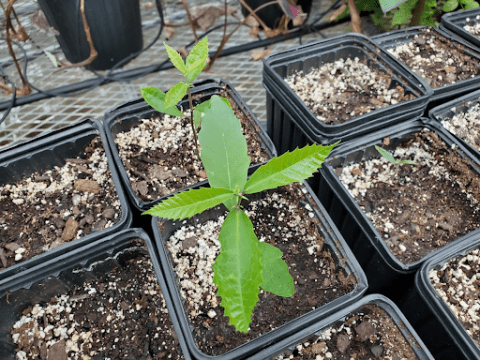American chestnuts, Castanea dentata, are majestic deciduous trees that once filled forests across the eastern United States. A mature American chestnut can reach an impressive size, it can grow over a hundred feet tall with a 10-foot trunk diameter. These proportions led to the nickname “redwood of the East”. From the southern reaches of the Blue Ridge Mountains to the Great Lakes of Michigan these trees were growing by the billions. They were first struck in the 1800s by ink disease that wiped out a large portion of the southern population. Again in the 20th century, the American chestnut was struck by tragedy. A disease known as chestnut blight has ravaged forests and wiped out the majority of the remaining population. Today, The American Chestnut Foundation and the United States Forest Service are working together to help restore this species back to its native glory. This fight involves breeding trees to be resistant to chestnut blight and reintroducing them to their natural landscape.
The University of Maryland Arboretum & Botanical Gardens has become a part of this restoration when we received a donation of 22 hybrid acorns in April 2022 from the American Chestnut Foundation. These seeds have been bred with Chinese chestnut genes that are meant to combat chestnut blight. All of the seeds were planted and by May 2022 a total of 9 seedlings had emerged at the Research Greenhouse Complex. Only 50% of the seeds germinated at all and from that only 4 are showing continued growth. The surviving seedlings were moved to various locations across the campus and are being integrated into the landscape and closely monitored.
As of September 2022, two of the original seedlings have been transferred to tree tubes and are growing in the outside area of the Research Greenhouse. One is thriving and continues to put out new leaves. They are being meticulously cared for by arboretum staff who are treating the soil and fertilizing to ensure the vitality of these specimens. The remaining American chestnuts have shown amazing progress in the short time that they’ve been at the university. Let’s all hope that the trees continue to grow into the majestic giants they are meant to be.
Compiled by Sophia Batman, written by Sam Bahr

